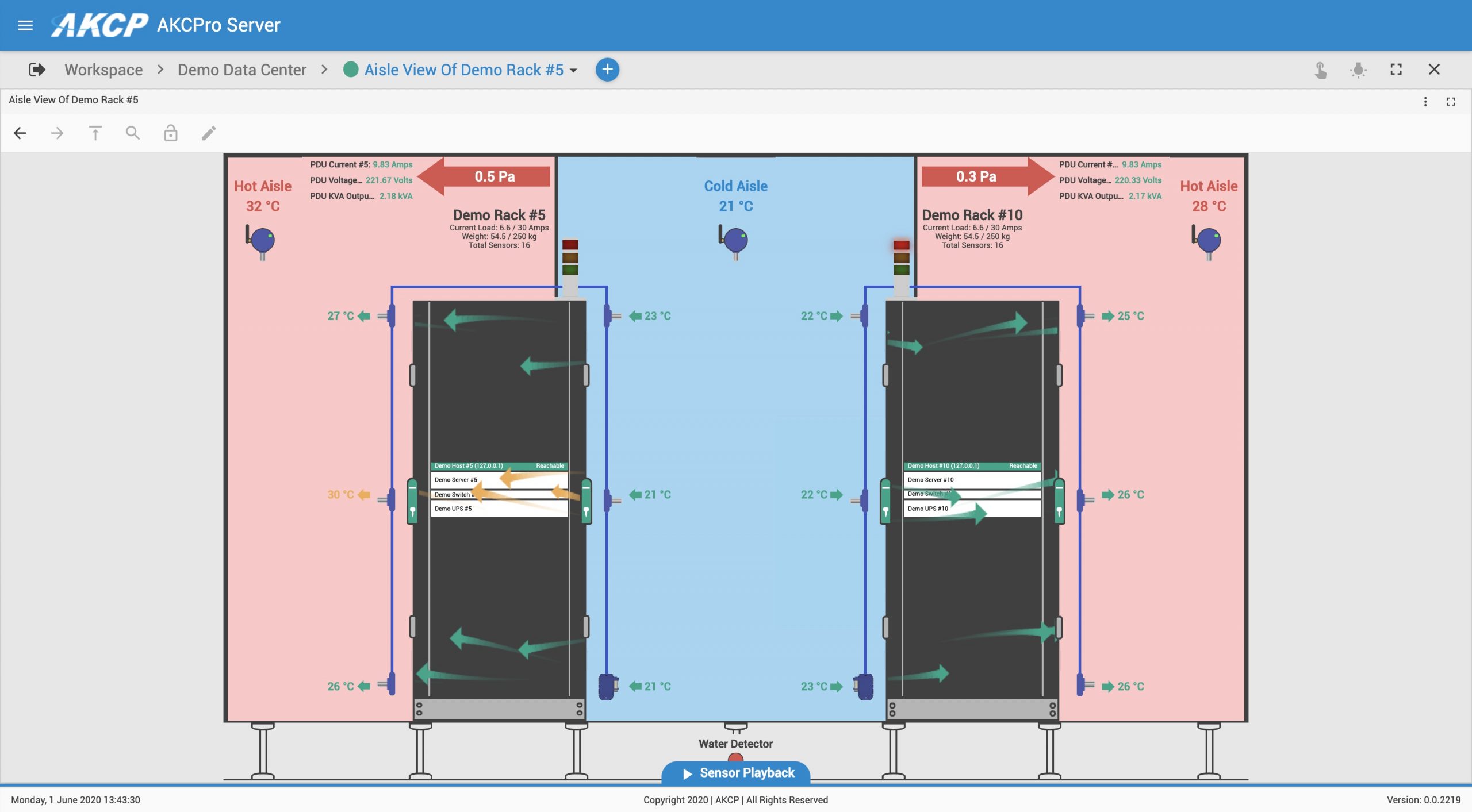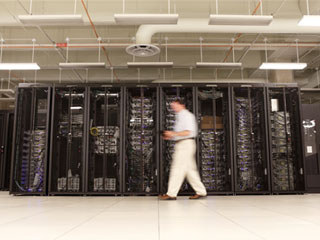Monitoring differential air pressure in the data center
Lower energy costs in the data center have resulted in various strategies being employed. Many have implemented the separation of hot and cold air. This is known as aisle containment. The installation of blanking panels in empty U’s of IT cabinets and brushes for cabling to enter through has become common. In addition, the control of CRAC unit fan speeds can further reduce energy costs.
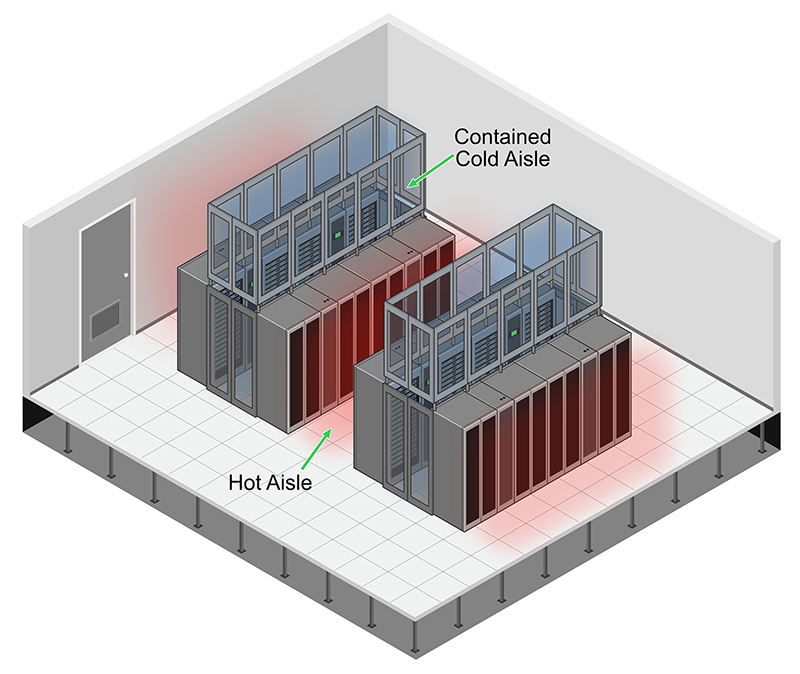
In order to control the fan speeds and lower energy costs for data center cooling, there must be a monitoring and control system in place. There are two primary methods used for this control system. It can be managed via a pressure differential sensor, or through a temperature sensor.
CRAC management via pressure differential sensors
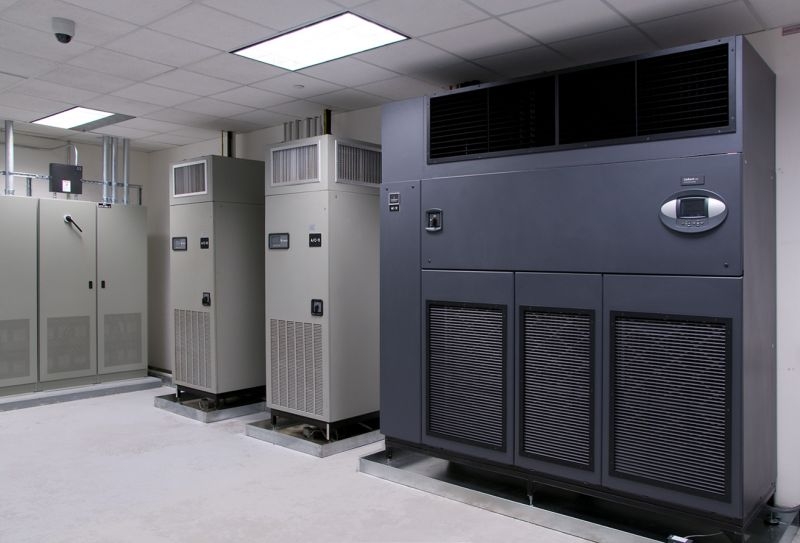
When the pressure differential sensor method is employed, a typical pressure difference of 20 Pa is maintained between the cold and the hot aisle. The cold air is
sucked through the servers by their fans. In addition, the air is forced through by the overpressure in the cold aisle. The speed of the fans in the CRAC or precision cooling unit is controlled to maintain the 20 Pa difference.
During high server loads, the cooling requirement increases, and the server fans will suck harder. In this case, the pressure will drop in the cold aisle, and so the CRAC fans are spooled up in order to keep the air demand and maintain the 20 Pa pressure difference.
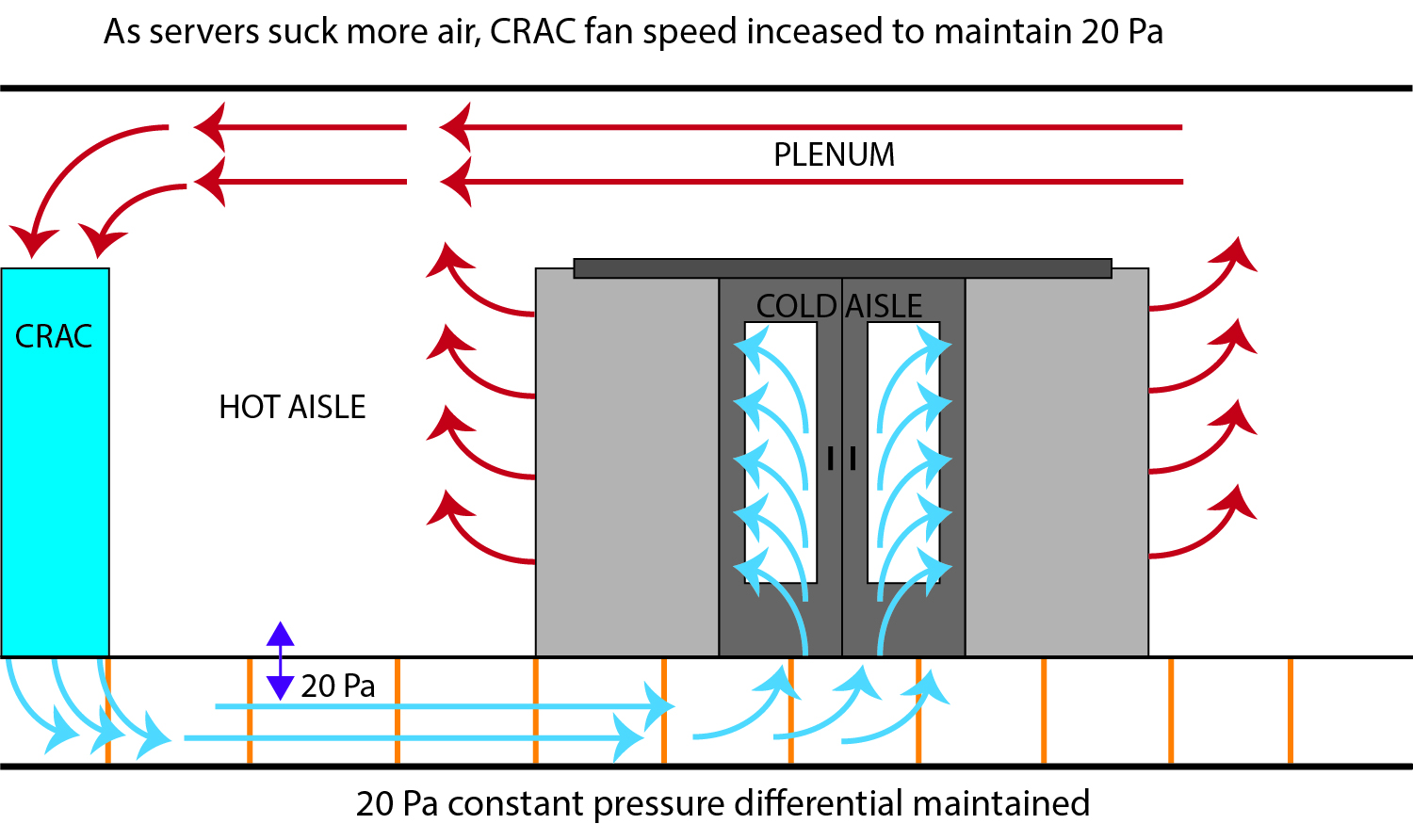
Conversely, when server loads are low, the air demand is lower. In this instance, if the CRAC units were operating at full capacity te 20 Pa pressure difference would be exceeded. In this instance, the CRAC fan speed can be decreased, again to maintain the 20 Pa pressure difference between the cold and hot aisle.
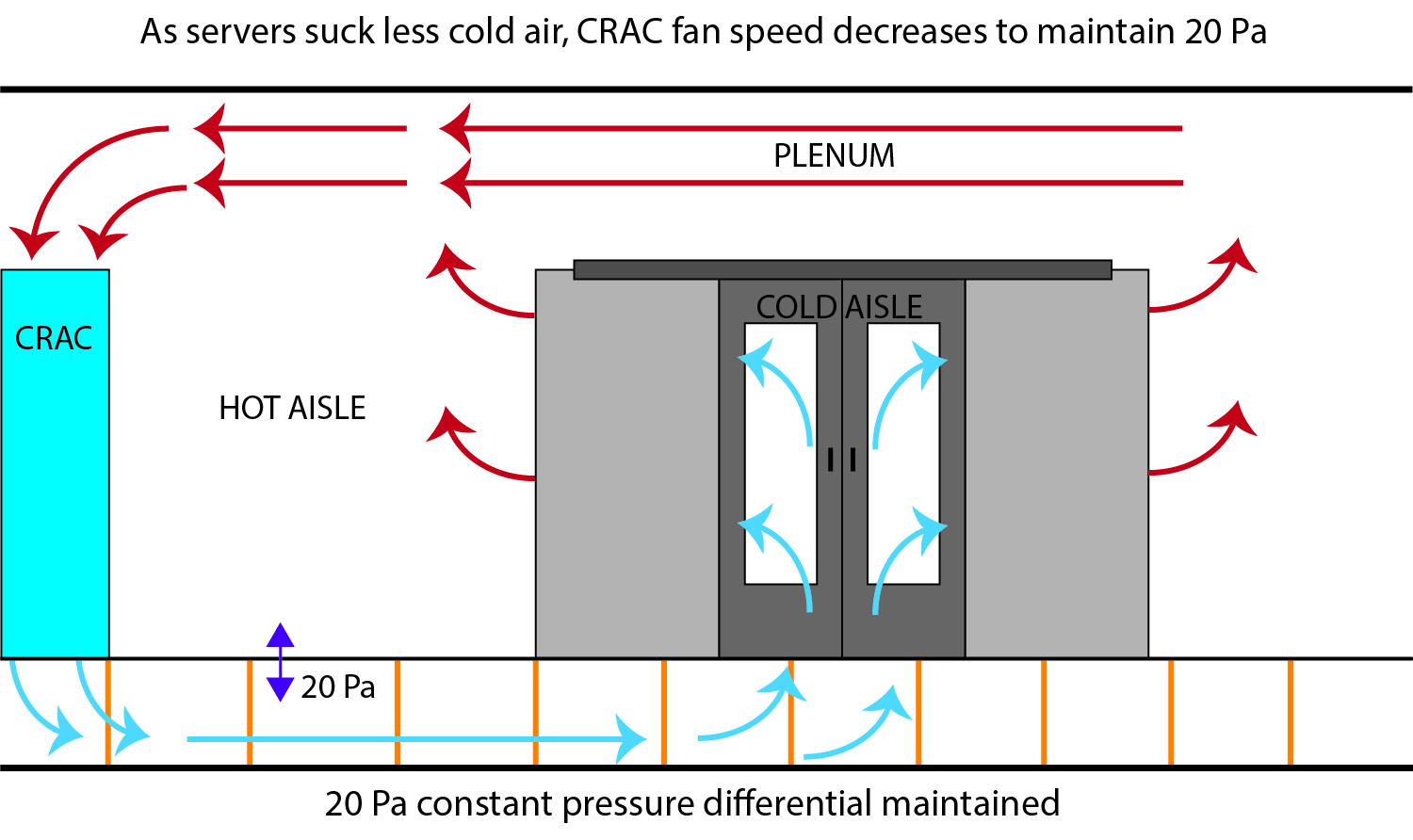
CRAC management via temperature sensors
An alternative method of control is through a temperature sensor. In this method, the pressure difference between the cold and hot aisle is kept as close to 0 Pa as possible. A very slight positive pressure may be present to prevent backflow of hot air. However, with proper containment, the server fans themselves will generate sufficient pressure to prevent this occurring. In this method of control, the servers are sucking exactly the amount of air they need, and nothing more.
A temperature sensor placed at a small opening in the containment aisle measures the temperature of the air flowing through. As server loads increase, the server fans will suck more air. If the CRAC is not able to supply air fast enough, the air will be sucked out of the cold aisle quicker than it is replaced. This leads to a positive pressure differential between the hot and cold aisle. When this occurs, hot air will begin to flow back into the cold aisle through the controlled opening. The temperature sensor at this opening will measure this increase and signal the CRAC to increase its fan speed.
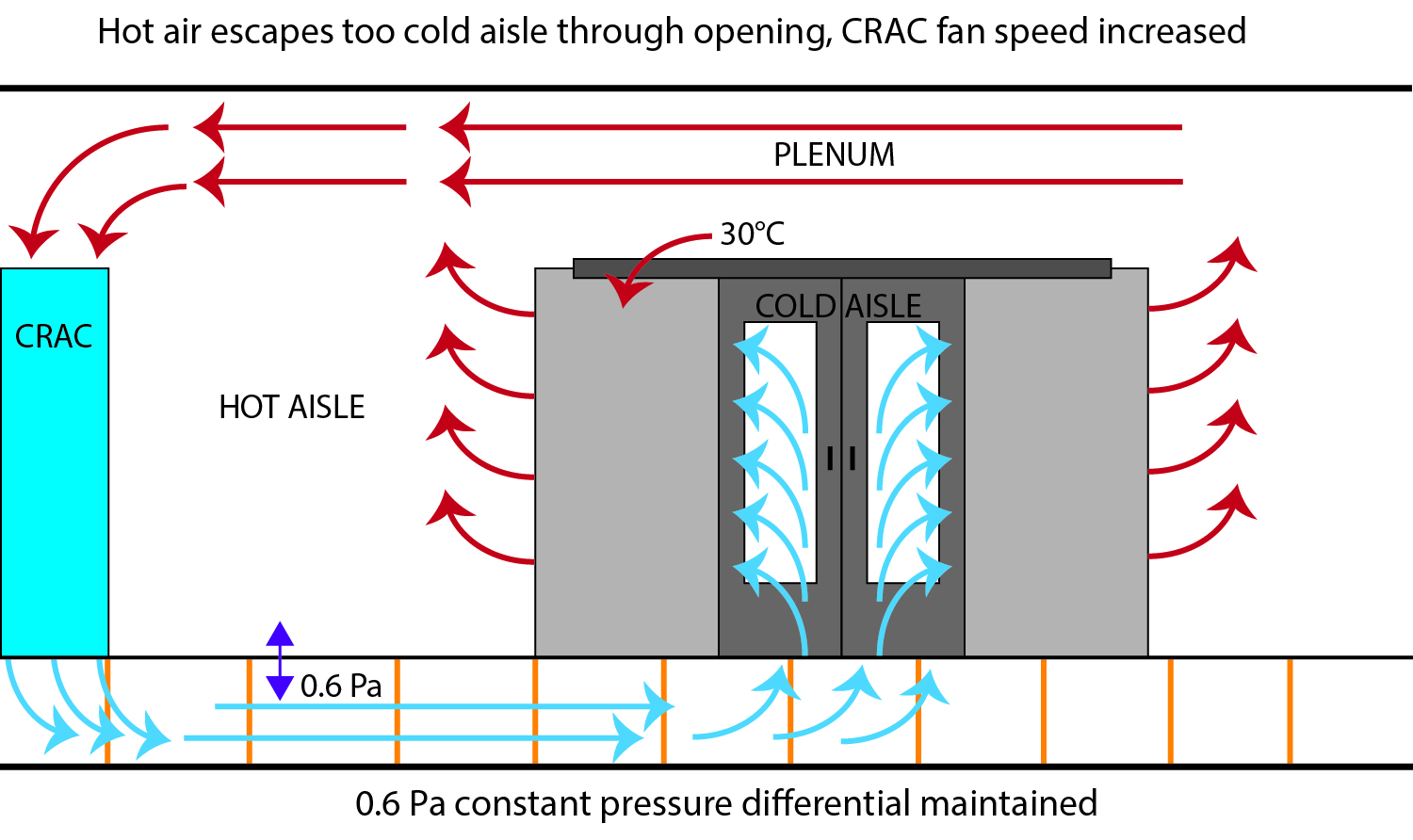
How then do you prevent overcooling in this system? The CRAC fans after being increased in speed will constantly decrease at a slow rate until again the temperature sensor detects an increase in temperature.

Temperature Control vs Pressure Control
Both of these systems are valid forms of control to prevent the mixing of the hot and cold air, but is there an advantage of one over another?
It can not be ruled out that in a pressure controls system the cold air supply can not keep up with the cooling requirements of specific cabinets. Depending on where the pressure sensor is located, some cabinets may require more cooling at a given time than another. By placing temperature sensors one each cabinet, the worst case can be used as the control point.
If we first consider the pressure control system. By maintaining a 20 Pa positive pressure in the cold aisle at all times, you are potentially overcooling the system, by supplying a higher volume of air than is actually required by the servers. In addition, no containment system is perfectly sealed. There will always be openings and gaps for cables and movable parts. If these gaps are taken into consideration, there will be higher cold air losses trough these gaps in a positive pressure system than in an even pressure system.
The volume of air lost through a gap can be calculated by the equation :
V = v x A
where :
V = Volume of air lost (m³/h)
v = airspeed (m/s)
A = gap surface area (m²)
By this, we can determine that in a positive pressure control system, higher pressure results in a higher airspeed through the gaps. For the same data center containment system, with the same number of gaps, the volume of air loss through the gaps is greater when positive pressure is maintained in the cold aisle.
In addition to the losses through gaps between servers, cabinets and cable baffles, there are losses through the servers themselves.
Modern servers are designed to operate without forced air. The internal fans are controlled assuming that here is no positive or negative static pressure on the inlet or outlet of the server fans. In addition, it is wrongly assumed in most calculations that when a server is idle, and fans are off, that the server is sealed. Of course, this is not the case, in reality, when the fans are off the server still provides a pathway for air. Therefore, in a positive pressure control system, where the cold aisle is pressurized to 20 Pa, when servers are idle there will be air losses through these servers.
Servers can spend up to 50% of their time in idle mode, meaning a significant amount of air can be lost through idle servers when positive pressure is maintained in the cold aisle.
It can be calculated for a typical 3 aisle data center, with 2×8 cabinets in each aisle, the typical difference is as follows.
|
Pressure Control |
Temperature Control |
|
|
Pressure |
20Pa |
0.6Pa |
|
Air speed |
5.81 m/s |
1.00 m/s |
|
Estimated Flow Volume |
52,800 m³/h |
52,800 m³/h |
|
Estimated flow loss through gaps |
18,446 m³/h |
3,238 m³/h |
|
Estimated flow loss through servers in idle mode |
18,321 m³/h |
1,267 m³/h |
|
Total necessary volume flow for cooling |
89,567 m³/h |
57,305 m³/h |
As you can see from this data, the total cooling air capacity required by the temperature control system is considerably lower than the pressure control system. This means your CRAC units will be operating at lower capacity more often, thus saving more energy and reducing operational overhead.
The below table compares the costs based on 3x CRAC units operating at full capacity to cool the 3 aisle data center.
|
Pressure Control |
Temperature Control |
|
|
Number of CRAC units |
3 |
3 |
|
CRAC speed |
98% |
67% |
|
Annual power requirement |
125,407 kWh |
45,990 kWh |
|
Annual power costs |
18,961 EUR |
6,899 EUR |
The cost savings are 64% lower when using temperature control instead of pressure control!
Data center differential pressure monitoring system
Whether you choose to use the pressure control or temperature control method, it is important to monitor both temperature and pressure in each system.
Temperature sensors in the pressure control system will alarm if the temperature rises above-defined limits. This could happen if fan failures occur for example. Pressure sensors will monitor the differential pressure between the cold and hot aisles. This can be used to feedback to the CRAC to increase or decrease fan speed to maintain the 20 Pa pressure difference.
In the Temperature control system, differential pressure sensors are still useful. They will monitor to ensure that the pressure difference is as close to 0 as possible. A recommended differential of not more than 0.6 Pa is recommended to be maintained.
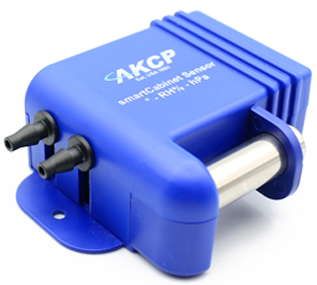
Cabinet Analysis Sensor
AKCP combined pressure differential and temperature sensor can be utilized. This sensor, suitable for both pressure control and temperature control applications includes a cabinet thermal map. Cabinet thermal maps not only check that air is at the correct temperature on entry to the cabinet they also check the outlet air temperatures. There are 6 sensors in total, which check the temperature at the top, middle and bottom of the rack, front and rear. This aids in detecting cabinet hot spots.
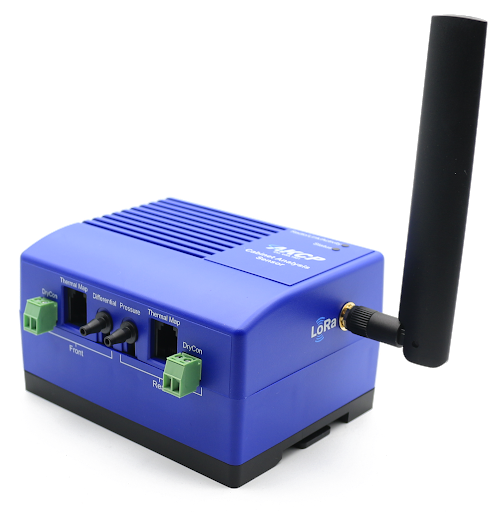
Wireless Cabinet Analysis Sensor
Wireless cabinet analysis sensor also include door contact sensors to alert when cabinets are accessed. Easy to install in hard to cable areas, and ideal for colocation data centers where cabinets need to be moved or rapidly commissioned.
Hot and cold aisle temperatures, as well as pressure differentials, are visually represented in AKCPro Server DCIM software. This aisle view, accessible from the data center floorplan, provides a section through the aisle at the location you select. Showing the thermal map properties, front to rear temperature differentials (ΔT) with hot/cold aisle pressure differentials. The interface can also display other sensor data coming from your intelligent PDU, water sensors, rack security and RFID cabinet handle locks.
